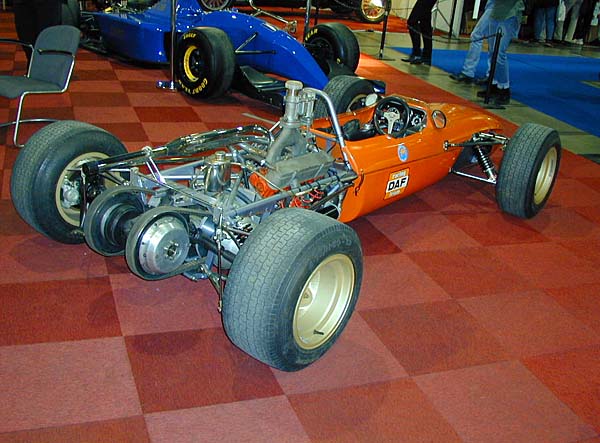I think maybe it’s the amount of friction you can get that limits the torque.
It’s only the dark gray pins that creates friction. Audi’s CVT chain.
Whole gearbox:
I think maybe it’s the amount of friction you can get that limits the torque.
Main reason is so you don’t have the CVT drone on acceleration which a lot of people say is the reason why they don’t want a car with a CVT.
While you do loose some efficiency on acceleration, in the end it doesn’t really matter for regular cars, but you gain the advantage of being able to use the very optimal ratio while cruising.
As for CVT usage in racing, they are also the main transmission type in snow mobile racing, both for drag and track racing, although they usually use a belt instead of a chain.

I believe there was an F1 team that tried to use a CVT at one point. It was banned shortly afterwards.

It works less like a CVT in snowmobiles, and more like a single speed.
The engine is constantly running, yes, but it’s just a simple clutch engagement system. Once the engine is revved up to a certain point, the clutch engages, in turn powering the sled forward.
It does not keep the engine at whatever the “optimum” rpm is, it just keeps the drive engaged to the engine’s rpm until the engine rpm drops below the clutch point.
It definitively does work as a CVT, even if it doesn’t keep the RPM as stable as an electronically controlled CVT.
While it does function as a centrifugal clutch when starting from a standstill, both of the pulleys keep changing their diameter as the speed goes up, keeping the engine RPM somewhat stable as your speed goes up, which is quite nice if you have a 2 stroke engine.
Those CVTs also commonly used in loads of other applications like the bikes @koolkei mentioned earlier as well as quadbikes because they are cheap and easy to use.
I have been corrected. I want To check that out now, time to search the internet for a good vid or something on it.
(Sent via mobile)
Found this video: https://www.youtube.com/watch?v=uCEvBGT8twM
I’m in class so I watched it w/o sound, but it shows how the thing works.